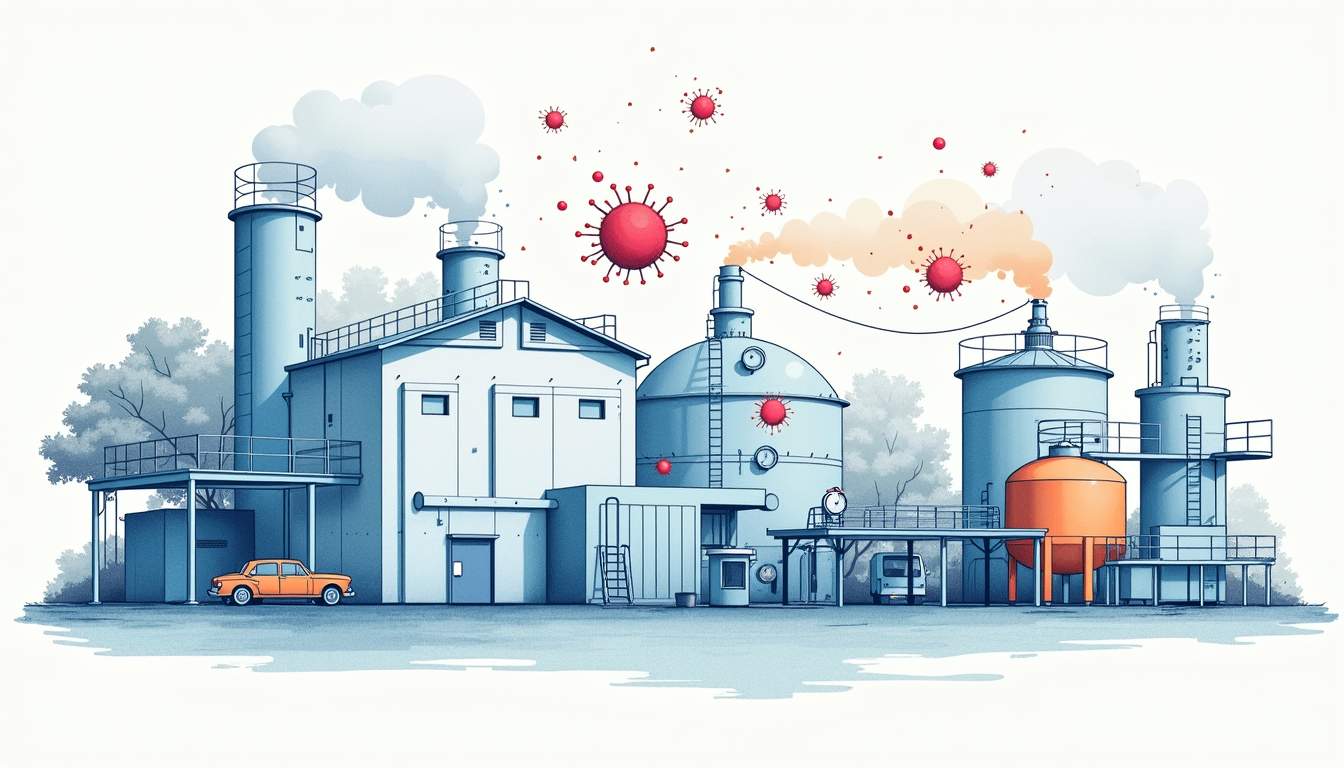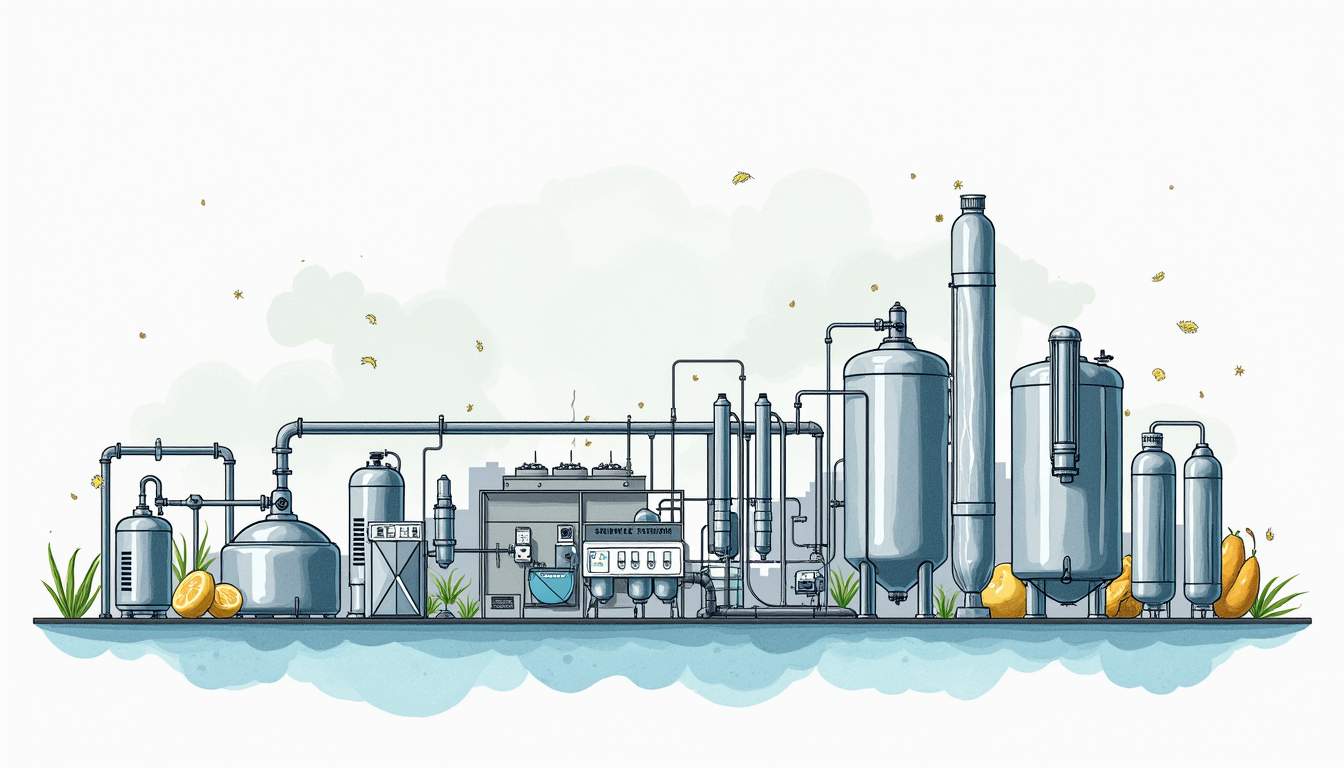Don’t Let Legionella Crash Your Production Line: A Guide to Safe Food Processing Water
How to Treat Legionella in Food Processing Water: A Comprehensive Guide
Legionella, a genus of bacteria found in freshwater environments, poses significant risks to food safety, particularly in food processing water. This comprehensive guide aims to inform industry professionals about the risks associated with Legionella, the science behind its contamination, and effective preventive and treatment measures. Understanding how to manage and mitigate these risks is essential for maintaining the safety and quality of food products.
Understanding Legionella: Risks and Implications
What is Legionella?
Legionella is a type of bacteria found naturally in freshwater environments, such as lakes and rivers. It becomes a health risk when it proliferates in man-made water systems, particularly at temperatures between 20°C and 50°C. The concern arises mainly because certain species of Legionella can cause Legionnaires’ disease, a severe form of pneumonia. This disease is particularly dangerous for the elderly, smokers, and individuals with weakened immune systems, as their bodies are less capable of fighting off infections.

Legionella can also cause a milder illness called Pontiac fever. The bacteria can be aerosolized and inhaled, leading to infection, which poses risks in environments like food processing where water is used in various forms. The symptoms of Legionnaires’ disease can mimic those of other respiratory illnesses, making it challenging to diagnose without specific testing. Early recognition and treatment are crucial, as the disease can escalate quickly and lead to serious complications, including respiratory failure and septic shock.
The Danger of Legionella in Food Processing Water
In food processing facilities, water is a critical component used for cleaning, cooling, and even as an ingredient. If water used in these processes is contaminated with Legionella, it can lead to serious health risks for both workers and consumers. The bacteria can survive in biofilms and plumbing systems, making them difficult to detect and eliminate. Regular monitoring of water quality and temperature is essential to prevent the growth of Legionella, as stagnant water or inadequate water treatment can create ideal conditions for the bacteria to thrive.
Moreover, outbreaks linked to contaminated food or water can damage a company’s reputation, sparking consumer distrust and leading to potential legal liabilities. Therefore, proactive measures to identify and eliminate Legionella are vital for food safety and public health. Implementing a comprehensive water management program that includes routine testing, maintenance of water systems, and employee training on hygiene practices can significantly reduce the risk of Legionella proliferation. Additionally, understanding the specific conditions that favor the growth of this bacteria can help facilities develop targeted strategies to mitigate risks, ensuring a safer environment for both workers and consumers.
The Science Behind Legionella Contamination
How Legionella Bacteria Thrive
Legionella bacteria thrive in various environments, especially warm and stagnant waters. When conditions are favorable—such as temperature, nutrient availability, and flow dynamics—these bacteria can multiply rapidly. In food processing systems, biofilms can develop in pipes, tanks, and equipment, providing a protective habitat for Legionella. These biofilms not only shield the bacteria from disinfection efforts but also serve as a reservoir for nutrients, further promoting their growth.
Factors that contribute to the growth of Legionella include the presence of organic matter, low water turnover rates, and inadequate water treatment methods. Monitoring these environmental conditions is crucial to prevent outbreaks. Regular maintenance and cleaning of water systems can disrupt biofilm formation and reduce the risk of Legionella proliferation. Additionally, temperature control is vital; keeping water temperatures below 20°C (68°F) or above 60°C (140°F) can inhibit bacterial growth, making it essential for food processing facilities to maintain these thresholds consistently.
The Role of Water in Legionella Spread
Water systems, including cooling towers, fountains, and plumbing networks, play a pivotal role in the spread of Legionella. The bacteria can be aerosolized from water sources and inhaled, leading to infection. In food processing plants, water used for rinsing or cooling can aerosolize and contaminate food products. This risk is particularly heightened in environments where water is sprayed or misted, creating fine droplets that can be easily inhaled by workers and consumers alike.
To minimize risks, food processing facilities must implement effective water management strategies, ensuring that water quality is maintained and contamination opportunities are eliminated. This includes regular testing for Legionella, maintaining proper filtration systems, and employing disinfection methods such as chlorination or UV treatment. Furthermore, staff training on the importance of water hygiene and the potential risks associated with Legionella can foster a culture of safety and vigilance, ultimately protecting both employees and consumers from potential health hazards. By prioritizing water management and hygiene practices, facilities can significantly reduce the likelihood of Legionella outbreaks and ensure a safer food processing environment.
Preventive Measures Against Legionella
Regular Water System Maintenance
One of the most effective strategies for preventing Legionella contamination in food processing water is to establish a comprehensive water management program. This includes regular maintenance of water systems, such as cleaning and disinfecting storage tanks, cooling towers, and pipes. Routine inspections can help identify areas where biofilms may develop. Biofilms, which are clusters of bacteria that adhere to surfaces, can create a protective environment for Legionella, making it more difficult to eradicate. Therefore, implementing a proactive approach to maintenance can significantly reduce the risk of contamination.
Additionally, documenting maintenance schedules and findings can enhance accountability and improve response times to potential contamination issues. Keeping detailed records not only aids in compliance with health regulations but also allows for trend analysis over time, helping facilities to identify recurring issues and adjust their strategies accordingly. Training staff on the importance of these measures ensures that everyone is aware of their role in maintaining water safety, fostering a culture of vigilance and responsibility.
Importance of Temperature Control
Temperature control is critical in preventing the growth of Legionella bacteria. The optimal temperature range for Legionella proliferation is between 20°C and 50°C; thus, maintaining water temperatures below 20°C or above 60°C is recommended. Regular monitoring of water temperatures in food processing systems can help ensure that they remain outside this danger zone. In addition to routine checks, it is beneficial to conduct seasonal assessments, as temperature fluctuations can occur due to changes in weather or operational demands.
Implementing automated temperature control systems can provide real-time monitoring and alert staff to any deviations from established safety protocols. These systems can be integrated with alarms that notify personnel immediately when temperatures approach the critical range, allowing for swift corrective actions. Moreover, training staff to understand the significance of these temperature thresholds and the potential risks associated with Legionella can empower them to take proactive measures, such as adjusting heating or cooling systems as needed. This not only enhances safety but also contributes to the overall efficiency of food processing operations, ensuring that quality standards are consistently met.
Detection of Legionella in Food Processing Water
Legionella Testing Methods
Detecting Legionella in food processing water involves several testing methods, including culture methods, polymerase chain reaction (PCR) assays, and antigen detection tests. Culture methods are considered the gold standard but can take up to two weeks for results. PCR provides faster results, making it a valuable tool for timely decision-making. In addition to these methods, enzyme-linked immunosorbent assays (ELISA) are also gaining traction as a reliable option for detecting Legionella antigens in water samples. ELISA tests can yield results within a few hours, which can be crucial in environments where rapid response is necessary to prevent widespread contamination.
Facilities should establish a regular testing schedule, focusing on high-risk areas, such as cooling towers, aerated tanks, and other water systems prone to stagnation. This proactive approach enables prompt identification and remediation of any contamination issues. Moreover, it is advisable to train staff on the importance of monitoring water quality and recognizing the signs of potential Legionella growth, such as biofilm formation or temperature fluctuations. By fostering a culture of vigilance, facilities can significantly reduce the risk of Legionella proliferation in their water systems.
Interpreting Test Results
Understanding test results is critical for effective response management. Most Legionella testing methods quantify the number of bacteria present in the sample, allowing facilities to establish baseline levels and trigger action protocols when contamination exceeds predefined thresholds. It is important to note that the presence of Legionella does not always indicate an immediate health risk, as certain strains are less pathogenic than others. Therefore, facilities must consider both the type and concentration of Legionella detected when formulating their response strategies.
Additionally, following up on positive test results with immediate corrective actions, such as water system disinfection or changes in operational procedures, is essential for safeguarding against outbreaks. Regular reviews of testing protocols and results can also help identify trends over time, enabling facilities to adapt their water management practices accordingly. Engaging with public health authorities and staying informed about the latest guidelines and research on Legionella can further enhance a facility’s ability to manage risks effectively and maintain a safe environment for food processing.
Treatment Methods for Legionella
Chemical Treatment Options
There are several chemical treatment options for controlling Legionella in food processing water. These include chlorination, chlorine dioxide, and copper-silver ionization systems. Chlorination is one of the most widely used methods and is effective in inactivating a wide range of pathogens, including Legionella.

It is essential to maintain appropriate levels of disinfectants to ensure their efficacy without compromising water quality or safety for food processing operations. Regular monitoring of disinfectant levels can help balance effectiveness with safety.
Non-Chemical Treatment Options
In addition to chemical treatments, non-chemical methods, such as ultraviolet (UV) light disinfection and thermal treatments, can be effective at controlling Legionella. UV light effectively inactivates bacteria without introducing harmful byproducts into the water. Similarly, thermal treatments, such as superheating and flushing, can eliminate Legionella from a water system.
Employing a combination of chemical and non-chemical strategies may offer the most comprehensive protection against Legionella, tailoring approaches based on the specific needs and operational dynamics of a food processing facility.
By understanding the risks, employing preventive measures, and implementing effective detection and treatment strategies, food processing facilities can safeguard their operations against Legionella contamination, ensuring food safety and protecting public health.
Protect Your Food Processing Operations with Chemstar WATER
At Chemstar WATER, we understand the critical importance of maintaining Legionella-free water systems in the food processing industry. Our tailored solutions are designed to meet the specific challenges of your facility, ensuring the safety and quality of your products. With our commitment to environmental sustainability and customer service excellence, we provide innovative water treatment technologies, including custom formulations and remote monitoring. Let us help you stay ahead of water safety concerns with our integrated, one-company solution. Learn More about how Chemstar WATER can support your business’s water treatment needs.












